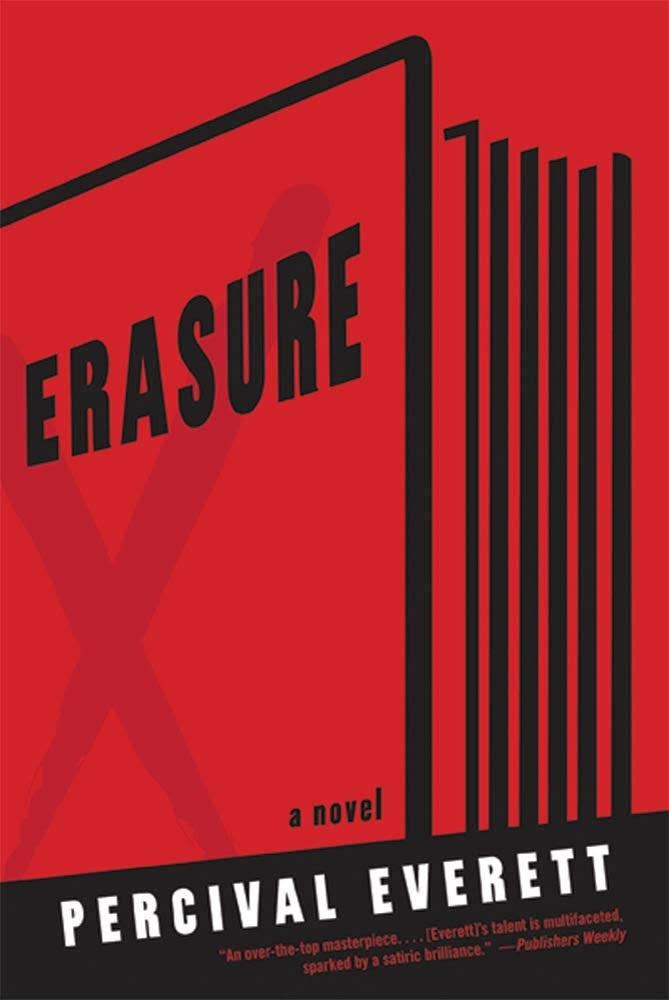8.4 /10 1 Votes8.4
Originally published 2001 | 4.2/5 Goodreads | |||||||||||||||||||||||||||||||||
 | ||||||||||||||||||||||||||||||||||
Similar I Am Not Sidney Poitier, The Water Cure, American Desert, Damned if I do, Half an Inch of Water: St | ||||||||||||||||||||||||||||||||||
Erasure is a 2001 novel by Percival Everett and originally published by UPNE. The novel reacts against the dominant strains of discussion surrounding the publication and criticism of African American literature.
Contents
Plot
Erasure is about a writer dealing with death, murder, and growing old. The novel's plot revolves around many things, but is essentially about the consequences of turning one's art into a simple commodity; i.e. giving into market forces. The market force within Erasure mirrors the late-90s reality around how the publishing industry pigeon-holed Black writers, and centered or valued certain experiences [those of the urban poor] over others. Themes around race, class, loyalty to family, sex, the theory of language, the life of canonical western artists, abortion, and sexual identity are also explored as the novel unfolds.
The protagonist, Thelonious "Monk" Ellison, a professor of English literature, is in a rut with his own writing. His agent repeatedly explains to him that publishing houses don't believe his writing to be "black enough". To make matters worse, Ellison experiences this angst, as another book called We's Lives In Da Ghetto by Juanita Mae Jenkins is becoming a national best seller and critical darling. Monk is angered by the success of Jenkins' book, so he composes a satirical response based on Richard Wright's Native Son and Sapphire's novel Push, which he first entitles My Pafology before changing it to Fuck. This novel is published in its entirety within Erasure and creates a meta-narrative that asks the ready about the value and merits of such writing in contrast to the supposedly more erudite text we are reading of Erasure.
Structure
Like many Everett novels, Erasure is experimental in structure. Part of the novel's structure involves the multiple embedded narratives, written by the main character Thelonious "Monk" Ellison, including his mock-novel titled My Pafology. The Guardian described as a "skilful, extended parody of ghetto novels such as Sapphire's Push" The novel includes other narrative styles within the larger narrative frame, including an academic paper, personal letters, story ideas, and imagined dialogue between fictionalized historical characters. There is even a section where it shifts quickly into third person, and by the last section we are told we are reading the end of Erasure as written by Stagg R Lee, which unironically is Monk's alter ego. This all sounds very literary and difficult, but the execution is precise and reader friendly. It's these elements and structures that make Percival one of the most important authors working today.
Criticism
The novel was well received. The Guardian focused on the dark comedy that it represents, describing it as moving towards "bleakest comedy" and "sly work." Ready Steady Book focused more on the novel being "full of anger" about the African American literary establishment, but describes the most redeeming elements of the plot coming from " moving portrait of a son coming to terms with his mother’s life."
